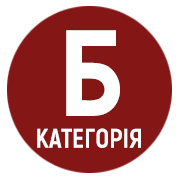ОСОБЛИВОСТІ ВИКЛАДАННЯ МАТЕМАТИЧНОГО МОДЕЛЮВАННЯ В КУРСІ ВИЩОЇ МАТЕМАТИКИ ЗАКЛАДУ ВИЩОЇ ОСВІТИ ДЛЯ СТУДЕНТІВ ТЕХНІЧНИХ СПЕЦІАЛЬНОСТЕЙ
DOI:
https://doi.org/10.32782/2410-2075-2023-16.15Ключові слова:
компетентність, математичне моделювання, вища математика, професійно орієнтовані завдання, методи викладанняАнотація
Математична освіта є одним із базових елементів системи професійної підготовки майбутніх фахівців технічних та інженерних спеціальностей у закладах вищої освіти. Для студентів технічних спеціальностей математика є не лише навчальною дисципліною, а й інструментом аналізу професійної діяльності, організації, моделювання й управління технологічними процесами. Останні досягнення в науці та техніці були б неможливими без розроблення та застосування ефективного апарату математичного моделювання, тому математичне моделювання є потужним інструментом розв’язання технічних, інженерних, технологічних і наукових проблем. Мета статті – дослідити особливості викладання математичного моделювання в курсах вищої освіти для професійної підготовки студентів технічних спеціальностей. Запропонувати рекомендації та методологічні підходи до викладання елементів математичного моделювання в курсі вищої математики з урахуванням зазначених особливостей. Для досягнення поставленої мети в роботі використано комплекс сучасних методів педагогічного дослідження: теоретичний – аналіз, узагальнення, порівняння, систематизація наукової та навчальної літератури – для визначення сучасного стану проблеми; емпіричні – діагностичні (спостереження, інтерв’ю) – для визначення ефективності сучасних методик удосконалення кромпетентностей математичного моделювання. Навички математичного моделювання посідають важливе місце серед загальних результатів освоєння студентами основних освітніх програм (особистісні характеристики, результати метапредметного характеру), предметних результатів. Володіння теоретичною базою й інструментарієм математичного моделювання є невід’ємним атрибутом сучасного фахівця. Трансформація сучасної освіти відповідно до суспільно-економічних запитів основним завданням підготовки фахівців технічної спеціальностей передбачає формування у студентів не лише знань, умінь і навичок, а й особливих компетенцій, сфокусованих на здатності застосування цих знань, умінь і навичок у майбутній професійній діяльності. Наукова новизна результатів дослідження полягає в запропонованих у роботі прийомах, які дозволяють досягти вищого рівня компетентностей студентів технічних спеціальностей закладів вищої освіти шляхом модернізації змісту освіти таким способом, щоб упливати на формулювання індивідуальної освітньої траєкторії студентів технічних спеціальностей із перших занять із вищої математики, акцентувати увагу на зв’язку навчального матеріалу всіх освітніх компонент із їхньою майбутньою професійною діяльністю та перспективами розвитку суспільства. За умови використання методу математичного моделювання у процесах формування загальних математичних понять, коли даний метод є предметом вивчення, процеси моделювання стають системотворчим джерелом розгортання арсеналу засобів навчання математики. Такі процеси стають органічним системотворчим, системопороджуючим носієм, який максимально відповідає самій природі математичної діяльності. Модернізація змісту освіти має базуватися на розвитку прикладних та інноваційних складників, які мають на меті формування висококонкурентних молодих фахівців на сучасному ринку праці.
Посилання
Затверджені стандарти вищої освіти. URL: https://mon.gov.ua/ua/osvita/visha-osvita/naukovometodichna-rada-ministerstva-osviti-i-nauki-ukrayini/zatverdzheni-standarti-vishoyi-osviti.
Математичне моделювання : підручник / А.М. Самойленко та ін. Київ : Наукова думка, 2015. 328 с.
Слєпкань З.І. Наукові засади педагогічного процесу у вищій школі : навчальний посібник. Київ : Вища школа, 2005. 239 с.
Методологічні аспекти інтегрованості математичного моделювання в системі математичних дисциплін вищої школи / В.В. Собчук та ін. Теоретико-практичні проблеми використання математичних методів та комп’ютерно-орієнтованих технологій в освіті та науці : ІІІ Всеукраїнська конференція, 28 квітня 2021 р. Київ. С. 164–167.
Методологічні аспекти навчання математичного моделювання в системі університетської освіти / В.В. Собчук та ін. Interdiscip Linary Studies of Complex Systems. 2022. № 21. С. 59–87. DOI: 10.31392/iscs.2022.21.059.
Creswell J.W. Research design: Qualitative, quantitative, and mixed methods approaches. Thousand Oaks, CA : Sage, 2013. 270 р.
Famous Mathematicians. URL: https://totallyhistory.com/biography/famous-mathematicians.
Iversen S. & Larson C. Simple thinking using complex math vs. complex thinking using simple math – A study using model eliciting activities to compare students’ abilities in standardized tests to their modelling abilities. Spribger. 2006. ZDM 38. P. 281–292.
Barbosa J.C. Mathematical modelling in classroom: A socio-critical and discursive perspective. 2006. ZDM 38 (3). P. 293–301. DOI: 10.1007/BF02652812.
Maaß K. What are modelling competencies? 2006. ZDM 38 (2). P. 113–142. DOI: 10.1007/BF02655885.
Blomhøj M., Kjeldsen T.H. Students reflections in mathematical modelling projects. Trends in teaching and learning of mathematical modeling / G. Kaiser et al. (Eds.). 2011. P. 385–395. DOI: 10.1007/978-94-007-0910-2_38.
Chapman O. Mathematical modelling in high school mathematics: teachers thinking and practice. Modelling and applications in mathematics education / W. Blum et al. (Eds.). 2007. P. 325–332. DOI: 10.1007/978-0-387-29822-1.
Frejd P. Modes of Mathematical modelling – An analysis of how modelling is used and interpreted in and out of school settings. Linköping, Sweden : Linköping University Electronic Press, 2014. 135 p. DOI: 10.3384/diss.diva-103689.
CAS-enabled technologies as “agents provocateurs” in teaching and learning mathematical modelling in secondary school classrooms / V. Geiger et al. Mathematics Education Research Journal. 2010. № 22 (2). P. 48–68. DOI: 10.1007/BF03217565.







